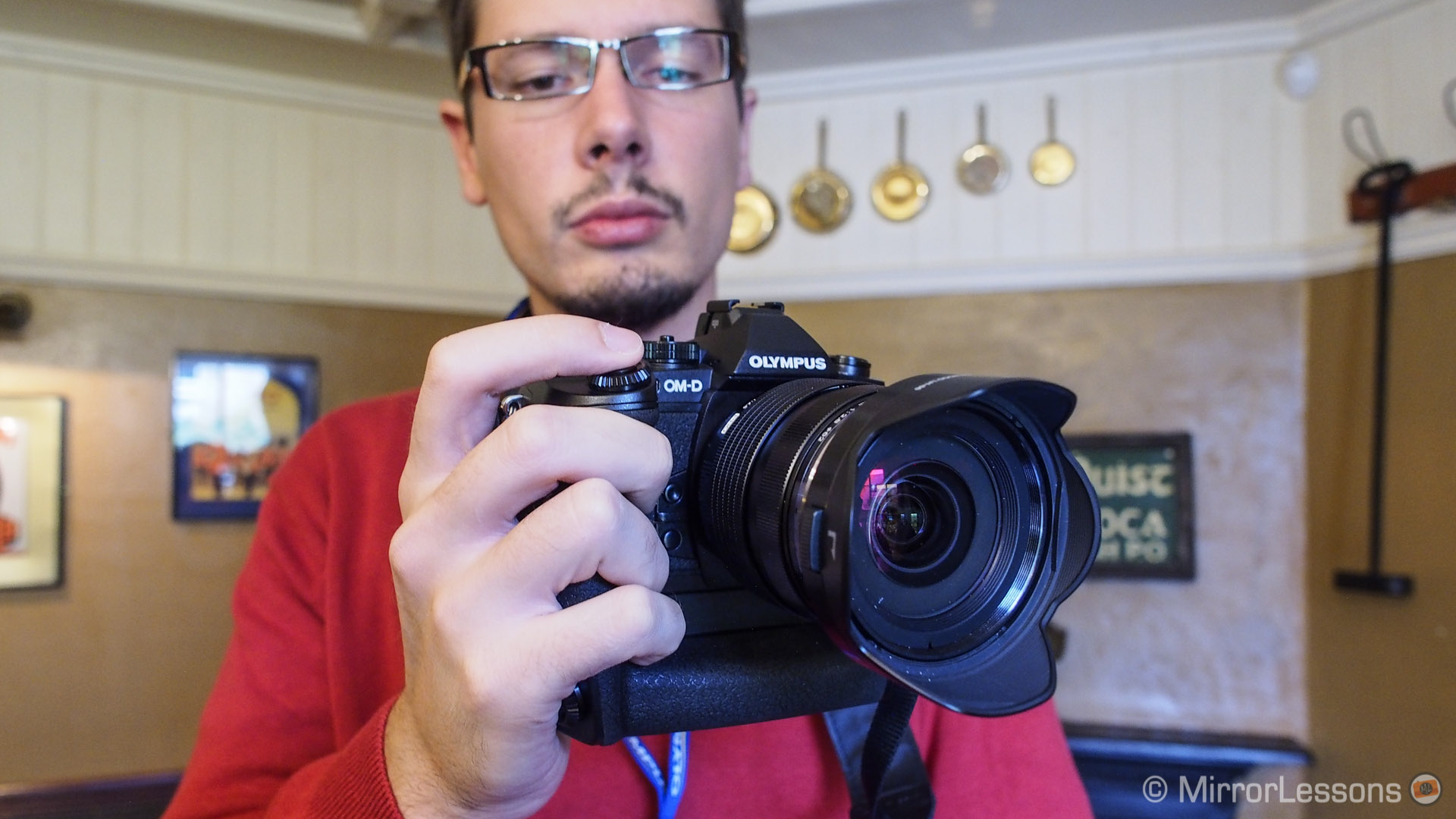We all know that from a realistic point of view, DSLRs are still today’s standard especially when it comes to professional photography. Many photographers continue to choose and invest in this segment not only because it has been the primary reference for years but also because you won’t find that number of diverse lenses available for any other system.
However the rise of mirrorless cameras is challenging the position of DSLRs. Brands are now investing in technology to create smaller, more portable bodies, and many professional photographers have started to switch to or adopt a MILC as a second body. It goes without saying that they want the features they loved on their DSLR to carry over to the mirrorless system as well. This means high image quality, high ISO performance, superior phase-detect autofocus, beautiful shallow depth-of-field, a robust and weatherproof build, and professional support–all characteristics the professional photographer will often refuse to forgo.
This list of ten features pros demand from their mirrorless cameras is the culmination of observations I’ve made living with a professional photographer myself (and a very fastidious one at that) and interacting with photographers around me. I’m sure that most of my observations won’t surprise you.
1. High image quality
Photography is all about delivering visual impact so it makes sense that image quality be a professional photographer’s first priority. It refers not only to the sheer number of megapixels contained on the sensor, but also to dynamic range, low-light performance, image processor, out-of-camera JPG quality, colour rendering, and the overall feel the image kindles within the viewer.
The good news is that most modern-day mirrorless cameras produce outstanding image quality comparable to that of even a DSLR. 16 MP sensors aren’t a rarity, the Fujifilm X-Trans and Sony sensors have raised the APS-C bar very high, and Micro Four Thirds sensors deliver almost the same performance as most APS-C cameras. And for those who desire even more, Sony has even managed to place a Full Frame sensor inside a compact camera and three MILCs (Mirrorless Interchangeable-Lens cameras). The Sony A7 and A7r boast a 24MP and 36MP sensor respectively, whereas the 12MP A7s is all about high ISO performance, with usable ISO values up to 51200.
In short, photographers have little to worry about in the IQ department, which is why they can turn their attention to less obvious details.
Our personal recommendation: Sony A7R or A7s
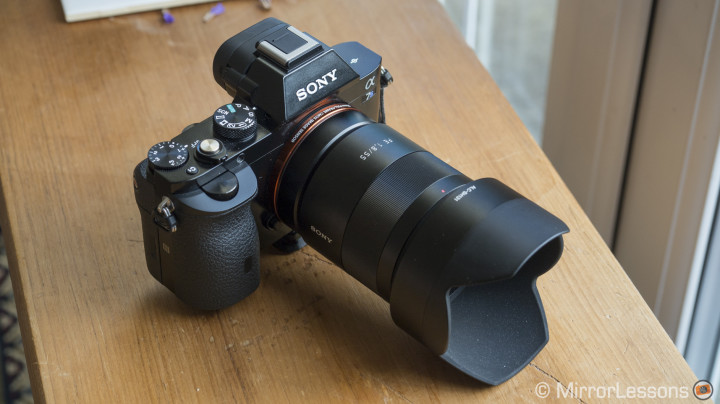
2. A viewfinder
The debate regarding viewfinders is a sensitive one. Most professionals won’t hesitate to tell you that shooting without a viewfinder is like eating without a knife and fork, whereas some find a bright, detailed and backlit LCD just as effective.
Low-end mirrorless cameras usually do not incorporate a built-in viewfinder while high-end models include built-in EVFs (electronic viewfinders). Professionals are instinctively drawn to OVFs (optical viewfinders) as they provide a clear, bright and sharp view of a scene without any lag, making it easier to capture that perfect instant. The advantage of electronic viewfinders, on the other hand, is a real-time preview of your exposure or colour effect if you choose a monochrome profile for example.
The good news is that EVFs are constantly improving. Recent models like the Fujifilm X-T1 and Olympus OM-D E-M1, for example, have bright EVFs with very good magnification and high resolution. The lag time, while still present, is becoming shorter and shorter and with each new generation of cameras, the quality improves.
So far, Fujfilm is the only company to have produced a mirrorless camera with a hybrid viewfinder that lets you choose between EVF and OVF (X-Pro1 and the X100 series). However, the OVF has some parallax issues that can limit its efficiency for photography at close range. But Fujifilm is also the brand that has designed the best EVF to date, the one found in the X-T1.
Our personal recommendation: Fujifilm X-T1
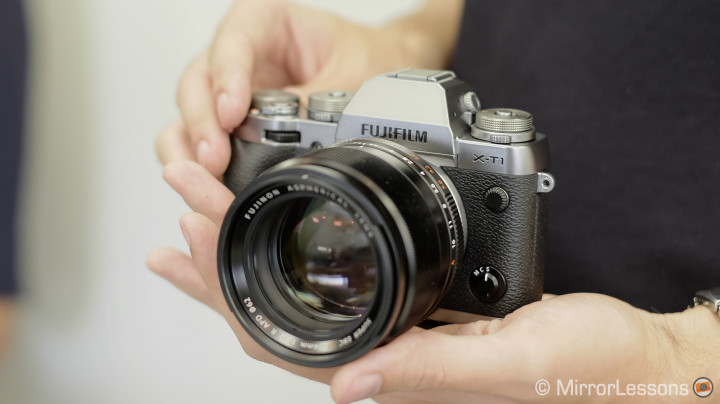
3. Internal stabilisation either in-body or in-lens
If you are shooting a poorly-lit event without a tripod, you know that internal stabilisation is going to be crucial to getting good shots at slow shutter speeds. This is why professionals are more likely to be tempted by mirrorless cameras with either powerful in-body stabilisation like the high-end Olympus models, or cameras that include stabilisation in the lenses like Panasonic.
The best internal stabilisation on the market today is Olympus’ 5-axis stabilisation, which allows you to shoot sharp images down to 1 second. The day that Olympus decides to go the video route will be monumental for filmmakers and video enthusiasts, as hand-held shots will become much easier to take.
Our personal recommendation: Olympus OM-D E-M1
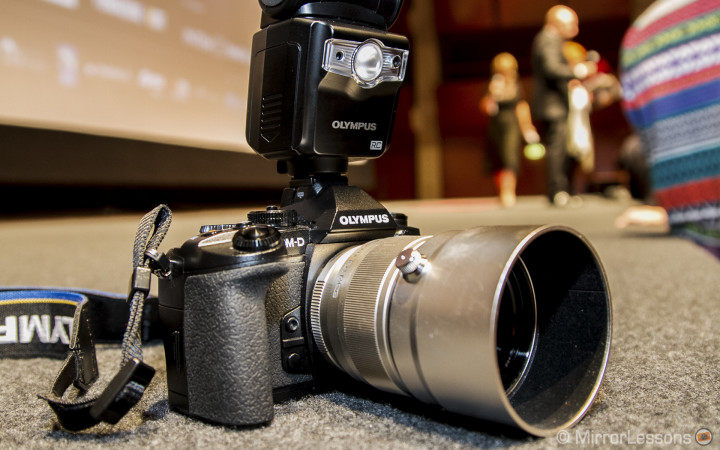
4. Fast autofocus
A snappy autofocus is an important characteristic professionals search for when considering a mirrorless camera. Why? Because moving subjects will always be around, be it at a wedding, sports event or child’s birthday party. The great thing is that many series, including Panasoinc Lumix, Olympus OM-D, Nikon 1 and Sony NEX/Alpha are all pretty well-endowed when it comes to autofocus. Fujifilm has almost caught up with its competitors thanks to various firmware updates which have made older models quite a bit faster than they were before.
Perhaps the most impressive camera of all (considering its price bracket) is the Sony a6000. In recent tests, it has gone up against high-end mirrorless cameras like the E-M1, X-T1 and GH4 and performed spectacularly. We can only hope that its great autofocus performance carries over to the upcoming Sony full-frame mirrorless cameras of 2015.
Our personal recommendation: Sony a6000
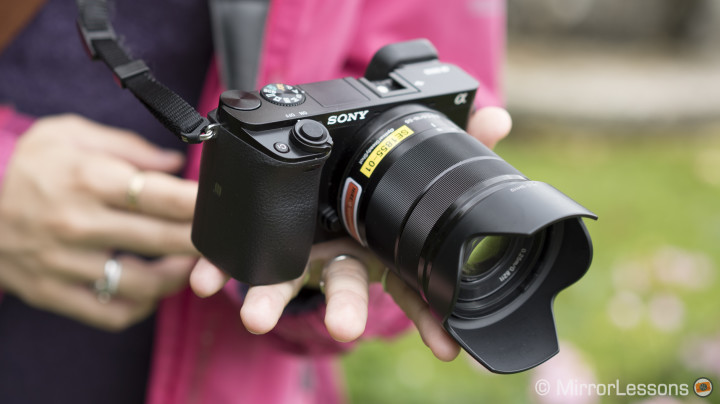
5. Compact body & compact lenses
I don’t know why I’ve listed ‘compactness’ as number 5, as it is probably one of the main characteristics professionals demand from their mirrorless cameras. After all, if they didn’t care about compactness, they would just stick with a DSLR, right?
A compact camera with big image quality can make all the difference to a photographer’s professional and personal life. From resolving back and shoulder problems to becoming more discreet on the streets to being able to carry around three cameras with different primes attached at the same time, the reasons professionals turn to compact bodies for work and pleasure are abundant.
As of today, the cameras and lenses in the Micro Four Thirds system are the most compact. A good example is the 35-100mm f/2.8 zoom lens from Panasonic, which is small for its focal length but manages to provide excellent performance and image quality. Likewise, the Panasonic Lumix GX7 is an excellent example of a professional yet compact camera which can rival a DSLR.
Our personal recommendation: Panasonic Lumix GX7
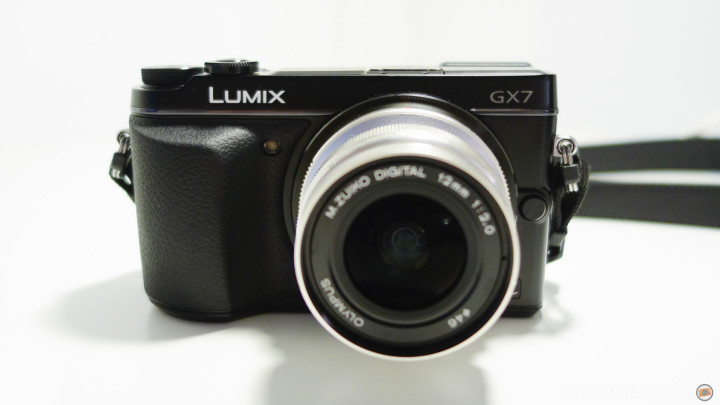
6. Ergonomic body
The problem with reducing the size of a camera body is that good ergonomics can get sacrificed along the way. If a photographer chooses to sell all his DSLR gear and marry himself to a mirrorless body, he’ll want to know that awkward finger twisting and hand cramps aren’t going to be side effects of his decision. This means comfortable hand and thumb grips, intelligently-positioned buttons, dials of a decent size, and a large viewfinder that conforms to your eye socket, not to mention a cool streamlined appearance. The Panasonic GH4, which has a DSLR-like design, is the best example of good ergonomics on a mirrorless camera.
Our personal recommendation: Panasonic Lumix GH4
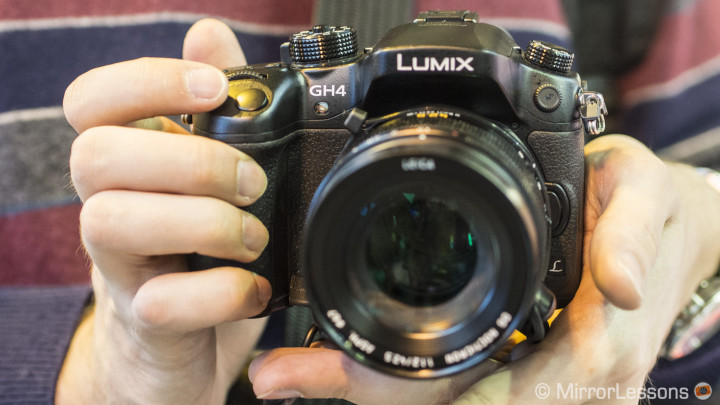
7. Customisable buttons
There is nothing worse for a professional (or an amateur in that matter) than frantically digging through a complex menu just to find the ISO settings, focus peaking or silent shutter. Believe me, in the time it takes to find that particular setting, the ‘perfect moment’ will have grown tired of waiting and shot by like a kid on his way to a candy shop.
This is why at least one function button is a ‘must’ for professionals. In fact, I would go as far to say that three or four would be the ideal number. A mirrorless camera without a single function button isn’t going to find itself in the hands of a professional. The Panasonic GH4, Fujifilm X-T1 and Olympus E-M1 are very good examples with their many customisable dials, buttons and toggles.
Our personal recommendation: Olympus OM-D E-M1
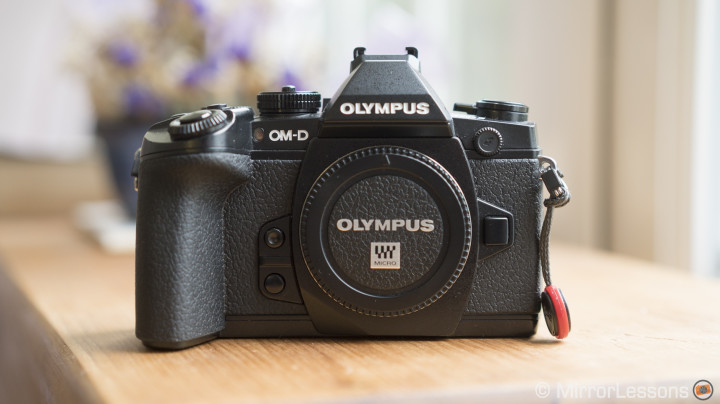
8. Professional support
A few years ago, Mathieu attended the Cannes film festival as a second shooter to a professional photographer. On the third day, the photographer’s Nikon D200’s unexpectedly broke but she was left anything but high and dry. Nikon’s professional support team immediately came to the rescue, providing her with a brand new D700 to use until the end of the festival and fixing her old camera.
For mirrorless cameras to become a viable option for professionals, professional support is highly desirable. So far, the only brands to provide professional support for mirrorless cameras are Olympus and Sony. The former has launched a Service Plus program for a number of countries in Europe (but not all) whereas the latter, after testing the waters in Asia, is now expanding in the US and Europe (starting with Germany).
Our personal recommendation: Olympus or Sony (for the time being)
9. A wide range of high quality lenses
Assuming that we are talking about MILC (mirrorless interchangeable lens cameras), it is absolutely essential that a series have a wide and diverse selection of quality lenses at its disposition. A professional photographer is unlikely to rely on a system that has only a couple of lenses to choose from, and even less so if those lenses aren’t at the standard of lenses used on DSLRs.
Moreover, for a professional to be even the least bit tempted, the lenses should reflect the characteristics of the mirrorless system–small, compact, hardy and easy to carry around.
To date, the Micro Four Thirds system by Olympus and Panasonic has the widest range of quality lenses for professionals, many of which have been designed by third parties such as Sigma, Tamrom, Samyang and Voigtlander. Fujifilm makes excellent fast prime lenses and constant aperture zooms that are a joy to use. They are closely followed by Sony, whose partnership with Carl Zeiss lenses will bring some very interesting lenses to the Sony A7/A7r/A7s full frame system. Nikon and Canon have a game of catch-up to play in this realm.
In the case of non-interchangeable mirrorless cameras such as the Fuji X100s, Ricoh GR or Sony RX1R, its fixed lens should be of supreme quality, with a fast aperture, attractive bokeh, and equal sharpness from edge to edge. The RX1 series excels from this point of view.
Our personal recommendation: Lenses from Micro Four Thirds and Fujifilm
10. A strong weatherproof build
A camera that is going to be accompanying the adventurous professional landscape photographer on field trips into the wild should know how to protect itself from wind, rain, dust and cold. Without weatherproofing, it would be too vulnerable to the elements, and professionals know this very well.
These days, more and more professional mirrorless cameras have a reliable weatherproof construction. The only issue is that many of the earlier lenses are not weatherproof, so even if you attach them to a weatherproof body, there is still a chance of water or dust reaching the sensor.
Our personal recommendation: Olympus OM-D E-M1, Fujifilm X-T1 or Panasonic GH4
As a professional, are there any other features you simply couldn’t live without?
